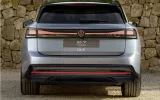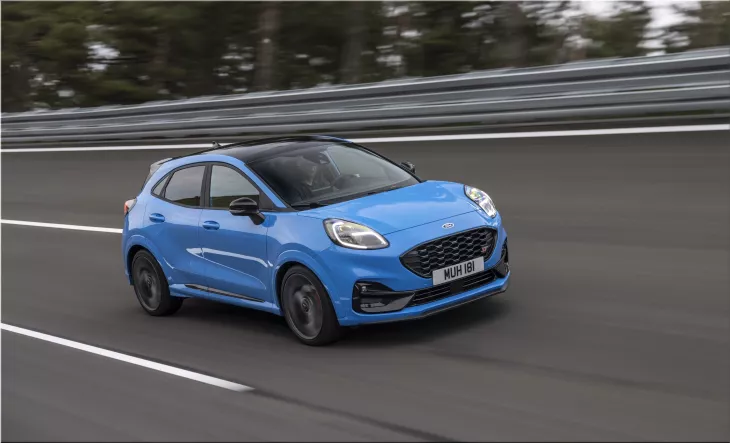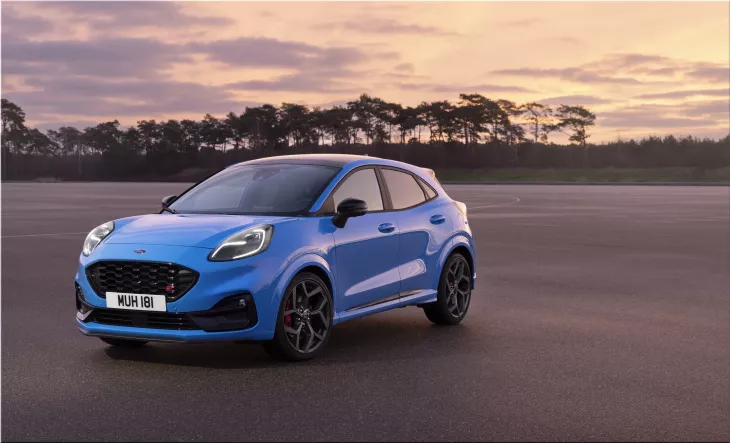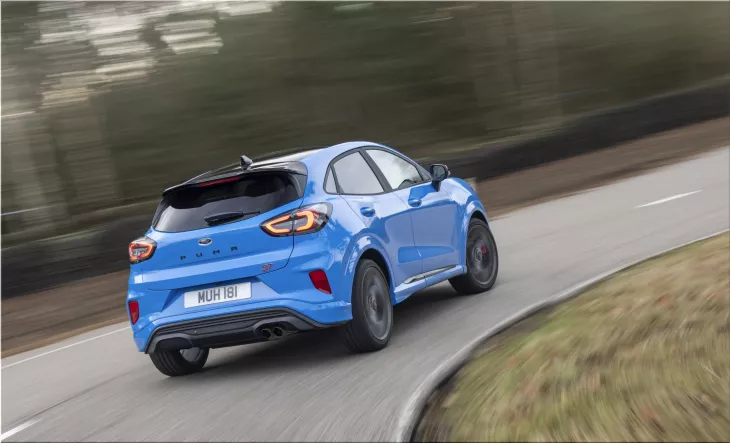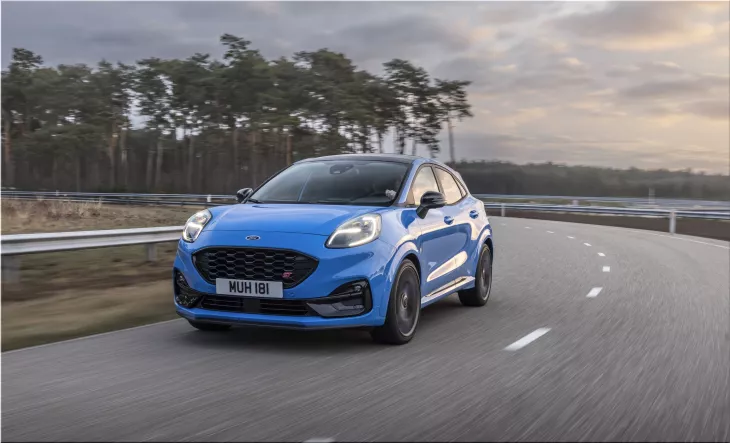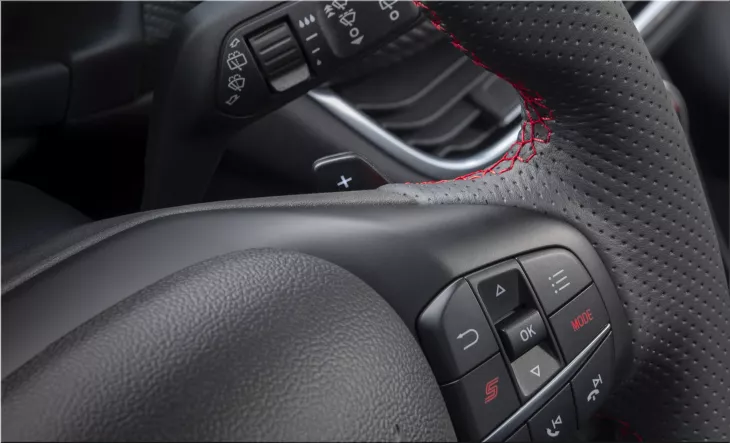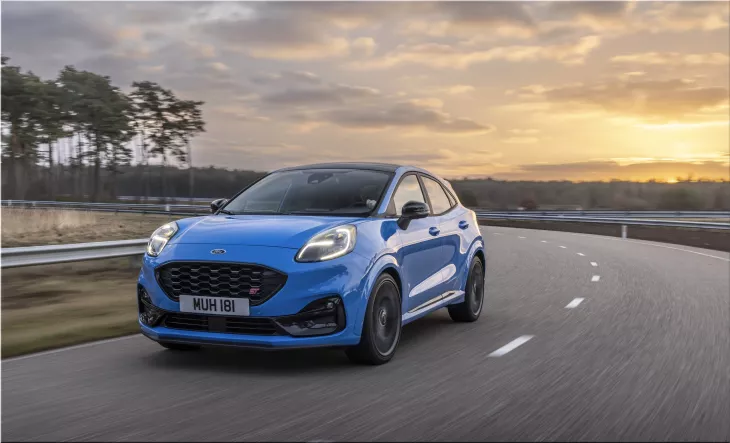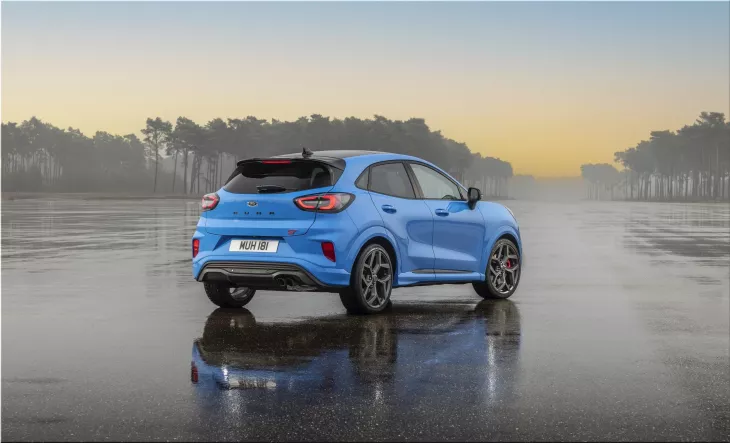The Ford Puma ST is one of the most fun and engaging compact crossovers on the market today. It combines a sporty chassis, a punchy turbocharged engine, and a sharp design to deliver a driving experience that rivals some hot hatchbacks. But what if you want to enjoy the Puma ST's performance without sacrificing fuel efficiency or environmental friendliness? Enter the Ford Puma ST Powershift, a new hybrid version of the SUV that trades engine capacity for electric power and increased efficiency.
The Ford Puma ST Powershift is the first electrified Ford ST model, and it aims to offer the best of both worlds: a spirited and seamless driving experience with versatile and practical everyday usability. It uses a smaller 1.0-liter EcoBoost engine than the regular Puma ST, which has a 1.5-liter unit, but it adds a 48-volt mild hybrid system that boosts the power output to 170 PS and the torque to 248 Nm. It also features a seven-speed dual-clutch automatic transmission with paddle shifters, which allows for quick and smooth gear changes.
The Puma ST Powershift hybrid crossover shares the same chassis and suspension setup as the Puma ST, which means it benefits from bespoke twist-beam and anti-roll bar settings, patented force vectoring springs, and selectable drive modes. It also has the same sporty exterior styling, with a large rear spoiler, dual exhaust pipes, 19-inch alloy wheels, and an exclusive Azura Blue color option. The interior is equally sporty and well-equipped, with Recaro seats, a flat-bottomed steering wheel, a 12.3-inch digital instrument cluster, an 8-inch touchscreen with SYNC 3 infotainment system, wireless charging, and various driver assistance features.
But how does the Puma ST Powershift compare to the Puma ST in terms of performance and efficiency?
According to Ford, the hybrid model can accelerate from 0 to 100 km/h in 7.4 seconds, which is only 0.7 seconds slower than the petrol model. It can also reach a top speed of 200 km/h, which is 20 km/h less than the petrol model. However, the hybrid model has a clear advantage in fuel consumption and emissions, as it can achieve up to 6.3 l/100 km and 144 g/km of CO2, compared to 7.1 l/100 km and 163 g/km of CO2 for the petrol model.
The Puma ST Powershift also has another benefit over the petrol model: it costs only £10 more in the UK market. The hybrid model starts at £30,825, while the petrol model starts at £30,815. This makes the hybrid model a very attractive proposition for buyers who want to enjoy the performance of an ST model without paying a premium for an automatic transmission or compromising on efficiency and environmental impact.
The Puma ST Powershift is not the only hybrid crossover in its segment, though. It faces competition from other models, such as the Hyundai Tucson Hybrid, the Kia Sportage Hybrid, and the Toyota RAV4 Hybrid. How does it stack up against them? Let's take a look at some key aspects:
- Power: The Puma ST Powershift has the highest power output among its rivals, with 170 PS. The Tucson Hybrid has 169 PS (230 PS for the plug-in hybrid version), the Sportage Hybrid has 169 PS (265 PS for the plug-in hybrid version), and the RAV4 Hybrid has 163 PS (222 PS for the plug-in hybrid version).
- Torque: The Puma ST Powershift also has the highest torque output among its rivals, with 248 Nm. The Tucson Hybrid has 236 Nm (350 Nm for the plug-in hybrid version), the Sportage Hybrid has 236 Nm (350 Nm for the plug-in hybrid version), and the RAV4 Hybrid has 221 Nm (306 Nm for the plug-in hybrid version).
- Acceleration: The Puma ST Powershift is not the fastest among its rivals in terms of acceleration from 0 to 100 km/h, but it is close. The Tucson Hybrid can do it in 7.2 seconds (6.3 seconds for the plug-in hybrid version), the Sportage Hybrid can do it in 7.3 seconds (6 seconds for the plug-in hybrid version), and the RAV4 Hybrid can do it in 8 seconds (7 seconds for the plug-in hybrid version).
- Top speed: The Puma ST Powershift has the lowest top speed among its rivals, with 200 km/h. The Tucson Hybrid can reach up to 205 km/h (195 km/h for the plug-in hybrid version), the Sportage Hybrid can reach up to 205 km/h (195 km/h for the plug-in hybrid version), and the RAV4 Hybrid can reach up to 210 km/h (180 km/h for the plug-in hybrid version).
- Fuel consumption: The Puma ST Powershift has the best fuel consumption among its rivals, with 6.3 l/100 km. The Tucson Hybrid has 6.5 l/100 km (1.4 l/100 km for the plug-in hybrid version), the Sportage Hybrid has 6.5 l/100 km (1.4 l/100 km for the plug-in hybrid version), and the RAV4 Hybrid has 6.7 l/100 km (1.2 l/100 km for the plug-in hybrid version).
- Emissions: The Puma ST Powershift also has the lowest emissions among its rivals, with 144 g/km of CO2. The Tucson Hybrid has 149 g/km of CO2 (31 g/km for the plug-in hybrid version), the Sportage Hybrid has 149 g/km of CO2 (31 g/km for the plug-in hybrid version), and the RAV4 Hybrid has 152 g/km of CO2 (28 g/km for the plug-in hybrid version).
As you can see, the Puma ST Powershift hybrid crossover holds its own against its competitors in terms of power, torque, acceleration, fuel consumption, and emissions while only lagging behind in top speed. It also offers a more engaging and dynamic driving experience than its rivals, thanks to its ST-tuned chassis and suspension, as well as its sporty design and features.
The Puma ST Powershift is a hybrid crossover that does not compromise on performance or fun. It is a great choice for drivers who want to have eco-friendly thrills in a practical and versatile package. It is also a great example of how Ford is using electrification to enhance its performance models rather than dilute them.
The Puma ST Powershift is expected to go on sale in Europe in late 2023, with no plans for a US launch at this time. If you are interested in this hybrid crossover, you can find out more about it on Ford's website.

